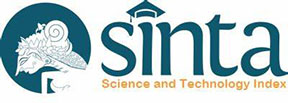RESPONS PERTUMBUHAN DAN PRODUKSI BEBERAPA VARIETAS PADI GOGO (Oriza sativa L.) DENGAN KETEBALAN TANAH MINERAL PADA LAHAN GAMBUT
DOI:
https://doi.org/10.32734/jopt.v4i1.3068Keywords:
upland rice varieties, thickness of mineral soil, peat soil, riceAbstract
A large area of feat soil as available across Aceh Singkil province of Aceh. The possibility of the
area for upland rice farming is a necessary tube evaluated. This study aims to evaluate the growth and
yield of upland rice varieties on peat soil with different thickness of soil. The research used
a randomized block design with 2 (two) factors. The first factor was rice varieties (V) were consist
of (1) Local variety (Siliam varieties), (2) Situ Bagendit varieties, (3) Situ Patenggang varieties and
(4) Batutegi varieties. Whereas the second-factor thickness of mineral soil applied on peat which
consists of 5 cm, 10 cm, 15 cm, 20 cm and no mineral soil as a control. The results indicated that
varieties of upland rice showed a significant effect on the growth and production variables such as
plant height 4, 6, 8 and 10 weeks after planting, where Situ Bagendit variety was the highest among
the varieties. Similarly, the number of tillers 4, 6, 8 and 10 weeks after planting, the highest number of
tillers was found on Situ Bagendit variety, while for the highest number of grain per panicle was in
Batutegi varieties. The thickness of mineral soil applicated on peat soil indicated a significant effect
on the growth and production variables such as plant height 4 weeks after planting. The highest
yield of upland rice was fond on Situ Bagendit variety followed by Batutegi variety, Situ
Patenggang variety and local variety (Siliam variety).






















